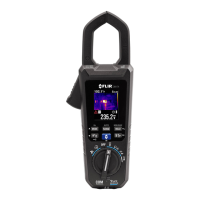5.10.3 Infrared Energy and Imaging Theory
A thermal imager generates an image based on temperature differences. In a thermal
image the hottest item in the scene appears as white and the coldest item as black, and
all other items are represented as a gray scale value between white and black.
It may take some time to get used to the thermal imagery. Having a basic understanding
of the differences between thermal and daylight cameras can help with getting the best
performance from the CM174.
One difference between thermal and daylight cameras has to do with where the energy
comes from to create an image. When viewing an image with an ordinary camera, there
has to be some source of visible light (something hot, such as the sun or lights) that
reflects off of the objects in the scene to the camera. The same is true with human
eyesight; the vast majority of what people see is based on reflected light energy. On the
other hand, the thermal imager detects energy that is directly radiated from objects in
the scene.
This is why hot objects such as parts on an engines and exhaust pipes appear white,
while the sky, puddles of water and other cold objects appear dark (or cool). Scenes with
familiar objects will be easy to interpret with some experience.
Infrared energy is part of a complete range of radiation called the electromagnetic
spectrum. The electromagnetic spectrum includes gamma rays, X-rays, ultraviolet,
visible, infrared, microwaves (RADAR), and radio waves. The only difference is their
wavelength or frequency. All of these forms of radiation travel at the speed of light.
Infrared radiation lies between the visible and RADAR portions of the electromagnetic
spectrum.
The primary source of infrared radiation is heat or thermal radiation. Any object which
has a temperature radiates in the infrared portion of the electromagnetic spectrum. Even
objects that are very cold, such as an ice cube, emit infrared. When an object is not quite
hot enough to radiate visible light, it will emit most of its energy in the infrared. For
example, hot charcoal may not give off light, but it does emit infrared radiation, which
we feel as heat. The warmer the object, the more infrared radiation it emits.
Infrared imaging devices produce an image of invisible infrared or “heat” radiation that is
unseen by the human eye. There are no colors or “shades” of gray in infrared, only
varying intensities of radiated energy. The infrared imager converts this energy into an
image that we can interpret.
The Infrared Training center offers training (including online training) and certification in
all aspects of thermography: http://www.infraredtraining.com/.

